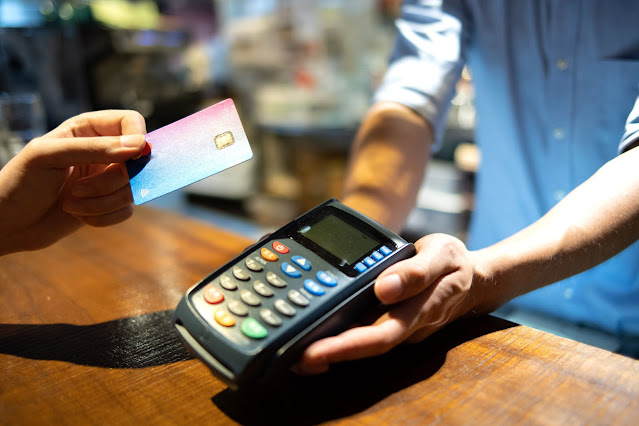Contactless Payments: Benefits and Security Measures
In recent years, contactless payments have revolutionized the way we make transactions, ushering in a new era of convenience and efficiency in the realm of finance. This innovative payment method allows individuals to make purchases swiftly and securely without the need to physically hand over cash or swipe a card. By simply tapping or waving their enabled devices, such as smartphones or contactless cards, customers can complete transactions in a matter of seconds. The widespread adoption of contactless credit card payments is attributed to its numerous benefits, including increased speed, ease of use, and enhanced hygiene, especially in light of the COVID-19 pandemic. Moreover, the implementation of robust security measures has played a pivotal role in instilling confidence in consumers and businesses alike, making contactless payments not only convenient but also trustworthy. This article delves into the manifold advantages of contactless payments while shedding light on the paramount security measures that safeguard these modern transactions.
Benefits of Contactless Payments:
Speed and Convenience:
One of the primary advantages of contactless payments is the speed at which transactions can be completed. Tapping or waving a contactless-enabled device takes only a few seconds, making it significantly faster than traditional payment methods like chip and PIN or cash. This efficiency is especially beneficial in high-traffic areas such as public transportation or busy retail outlets, where quick transactions can reduce queues and waiting times.
Enhanced Hygiene:
In the wake of the COVID-19 pandemic, contactless payments have gained even more popularity due to their hygienic nature. With contactless transactions, there is no need for physical contact with payment terminals or exchange of cash, reducing the risk of spreading germs and viruses. This increased hygiene factor has reassured consumers about the safety of making purchases in physical stores.
Ease of Use and Accessibility:
Contactless payments are incredibly user-friendly. Consumers do not need to memorize PINs or carry cash, making it an accessible option for people of all ages and technological proficiency. Additionally, contactless-enabled cards and devices are widely available, allowing users to make payments without the need for specific merchant or bank partnerships.
Streamlined Public Transportation:
Many cities have integrated contactless payment systems into their public transportation networks. This integration allows passengers to use their contactless cards or mobile devices to pay for fares, eliminating the need for separate tickets or cards. As a result, public transportation becomes more seamless and convenient for commuters.
Reduced Costs and Environmental Impact:
Contactless payments can lower operational costs for businesses as they reduce the reliance on cash handling and the need for frequent terminal maintenance. Additionally, fewer paper receipts and transaction records contribute to a decrease in paper waste, aligning with environmental sustainability efforts.
Security Measures for Contactless Payments:
Encryption:
Contactless payments utilize encryption technology to protect sensitive data during transmission. The payment information, such as card details, is encoded, making it difficult for unauthorized individuals to intercept and decipher the data.
Tokenization:
Tokenization replaces sensitive payment information with unique, one-time-use tokens. These tokens act as temporary substitutes for actual card details, reducing the risk of exposing real financial data in case of a breach.
Biometric Authentication:
Many contactless payment systems incorporate biometric authentication, such as fingerprint scanning or facial recognition, to add an extra layer of security. Biometrics provide a highly secure way of verifying the user's identity, making it challenging for unauthorized users to gain access.
Transaction Limits:
To mitigate potential losses in case of fraudulent activity, contactless payments often have transaction limits. Once the limit is reached, users need to use their PIN or perform additional authentication to complete higher-value transactions.
Secure Element Technology:
Some contactless payment methods store sensitive data in a secure element, a dedicated chip within the device. This isolated storage ensures that payment information remains protected even if other parts of the device are compromised.
Real-time Fraud Detection:
Banks and payment processors employ sophisticated fraud detection algorithms to monitor transactions in real-time. Unusual patterns or suspicious activities trigger immediate alerts, allowing quick intervention to prevent fraudulent transactions.
Consumer Liability Protection:
Most financial institutions provide consumer liability protection for contactless payments, limiting the liability of customers in the event of unauthorized transactions.
Bottom line:
In conclusion, contactless payments offer a plethora of benefits, transforming the way we conduct financial transactions by providing speed, convenience, and improved hygiene. The ability to make swift purchases with a simple tap or wave has resonated well with consumers, enhancing their overall shopping experience. However, amidst the allure of contactless payments, ensuring robust security measures remains paramount to maintain customer trust and protect against potential threats. The integration of encryption, tokenization, biometric authentication, and transaction limits serves as a safeguard against unauthorized access and fraudulent activities. By striking a balance between convenience and security, contactless payments continue to reshape the future of commerce, paving the way for a seamless and secure financial ecosystem.


.jpg)
Comments
Post a Comment